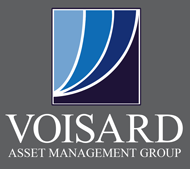Health Savings Accounts (HSAs) offer a unique set of tax advantages, making them a valuable tool for managing healthcare expenses and long-term financial planning. Contributions to an HSA are tax-deductible, and any earnings within the account grow tax-free. Additionally, qualified medical expenses can be withdrawn tax-free, providing significant cost savings for individuals and families enrolled in high-deductible health plans (HDHPs).
While HSAs offer these compelling benefits, according to the Employee Benefit Research Institute, a significant portion of account holders (roughly 88%) keep their contributions solely in cash. This approach may not be optimal, as it forgoes the opportunity for potential tax-free growth within the account.
Strategic Investment Considerations for HSAs
A prudent approach to HSA management involves maintaining a readily accessible cash balance to cover anticipated near-term medical expenses, typically two to three years’ worth. Once this emergency fund is established, excess contributions can be strategically invested to achieve long-term financial goals. Depending on cash flow, an emergency fund within the HSA may not be necessary. Funding all medical expenses out of pocket would be most advantageous while preserving the funds within the HSA for long-term growth, but this strategy heavily depends on personal circumstances.
Here are two key reasons to consider investing your HSA funds:
- Rising Healthcare Costs: Healthcare costs have a well-documented history of outpacing inflation. By investing a portion of your HSA, you can potentially outpace these rising costs and ensure your account has sufficient funds to cover future medical needs.
- Retirement Planning Utility: After reaching age 65, HSAs offer flexibility in their use. While contributions and earnings remain tax-free, withdrawals for non-qualified expenses are taxed as ordinary income. However, unlike traditional IRAs, HSAs are not subject to required minimum distributions (RMDs), making them a compelling option for supplementing retirement income.
Eligibility and Contribution Limits
To contribute to an HSA, you must be enrolled in a qualified HDHP. In 2024, the maximum contribution limit for individual HSAs is $4,150, with an additional $1,000 catch-up contribution available for those aged 55 or older. Family HSA contribution limits are set at $8,300.
It’s important to note that most HSAs require a minimum cash balance to be maintained before investment options become available. Once this minimum balance is met, you can then begin investing a portion of your HSA based on your individual risk tolerance and investment time horizon. Many HSA providers offer a variety of investment choices, allowing you to construct a diversified portfolio within the account.
Summary
By following a strategic approach that combines emergency savings with long-term investment strategies, individuals can maximize the potential of their HSAs and achieve greater financial security for their healthcare needs and overall retirement goals. If you have questions regarding how to maximize your HSA or other financial planning-related items, please contact our team.



